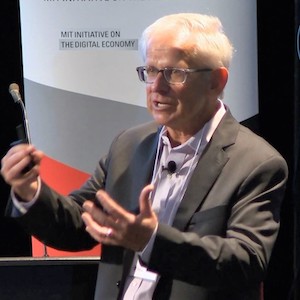 Meaningful Use Stage 2 has a requirement that I’ve always considered to be the “cart before the horse” - patients must be able to View/Download/Transmit their data. Viewing is great - we’ve done that at BIDMC since 1999 for all patients and all data. Download makes little sense since at the moment there is nothing a patient can do with a download. Of the 2 million patients at BIDMC, not one has ever requested a download. Transmit makes even less sense since there is no place to transmit the data to...
Meaningful Use Stage 2 has a requirement that I’ve always considered to be the “cart before the horse” - patients must be able to View/Download/Transmit their data. Viewing is great - we’ve done that at BIDMC since 1999 for all patients and all data. Download makes little sense since at the moment there is nothing a patient can do with a download. Of the 2 million patients at BIDMC, not one has ever requested a download. Transmit makes even less sense since there is no place to transmit the data to...
 Value for customers is created differently on platforms than by traditional product/service business models. Today we’ll present and discuss the metaphor of how traditional businesses can be thought of as “pipelines” and how these pipes differ from digital platforms. This post is the first in a new series: “The New Rules of Healthcare Platforms.” We’ll be writing about platform thinking, new mental models, and the new economics of platform business models and strategy. We’ll have at least seven posts to explain these new rules. You’ll have some unlearning to do. We’ll illustrate how platform business models are fundamentally different than traditional product/service business models. To understand platforms, we need to change more than just our thinking—we need to learn new rules about how the digital world works and how platforms fit in.
Value for customers is created differently on platforms than by traditional product/service business models. Today we’ll present and discuss the metaphor of how traditional businesses can be thought of as “pipelines” and how these pipes differ from digital platforms. This post is the first in a new series: “The New Rules of Healthcare Platforms.” We’ll be writing about platform thinking, new mental models, and the new economics of platform business models and strategy. We’ll have at least seven posts to explain these new rules. You’ll have some unlearning to do. We’ll illustrate how platform business models are fundamentally different than traditional product/service business models. To understand platforms, we need to change more than just our thinking—we need to learn new rules about how the digital world works and how platforms fit in.
 Primary care physicians spend more than half of their workday at a computer screen performing data entry and other tasks with electronic medical records (EHRs), according to new research from experts at the University of Wisconsin and the American Medical Association (AMA). Based on data from EHR event logs and confirmed by direct observation data, researchers found that during a typical 11.4-hour workday, primary care physicians spent nearly six hours on data entry and other tasks with EHR systems during and after clinical hours. The study was published today in the Annals of Family Medicine...
Primary care physicians spend more than half of their workday at a computer screen performing data entry and other tasks with electronic medical records (EHRs), according to new research from experts at the University of Wisconsin and the American Medical Association (AMA). Based on data from EHR event logs and confirmed by direct observation data, researchers found that during a typical 11.4-hour workday, primary care physicians spent nearly six hours on data entry and other tasks with EHR systems during and after clinical hours. The study was published today in the Annals of Family Medicine... We have recorded a robust year of growth during 2014 and have laid a solid foundation for market expansion in 2015. OSEHRA corporate membership doubled during 2014. Corporate Members include large, medium and small corporations, nonprofits, academic institutions and international organizations that are leaders in health information technology...our primary open source electronic health record product, VistA, was rated by a MedScape survey as the most preferred EHR by physician users again in 2014. Further, our corporate members collaborate on policy, marketing, education and software initiatives. We expect the business opportunities for corporate members to grow considerably next year as the marketplace for open source health IT continues to expand.
We have recorded a robust year of growth during 2014 and have laid a solid foundation for market expansion in 2015. OSEHRA corporate membership doubled during 2014. Corporate Members include large, medium and small corporations, nonprofits, academic institutions and international organizations that are leaders in health information technology...our primary open source electronic health record product, VistA, was rated by a MedScape survey as the most preferred EHR by physician users again in 2014. Further, our corporate members collaborate on policy, marketing, education and software initiatives. We expect the business opportunities for corporate members to grow considerably next year as the marketplace for open source health IT continues to expand.